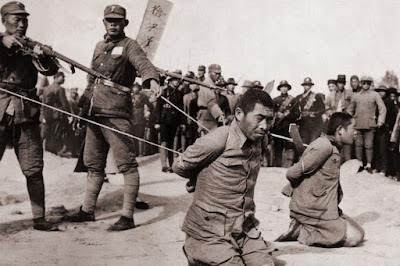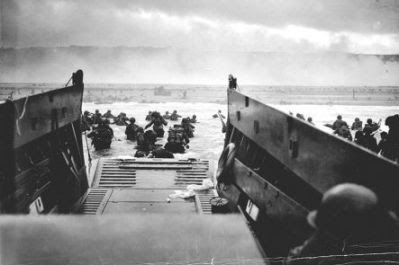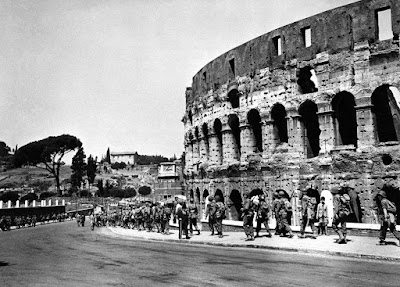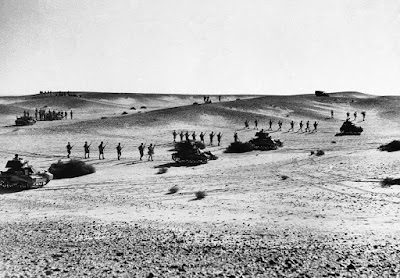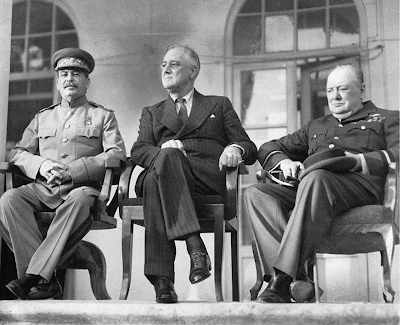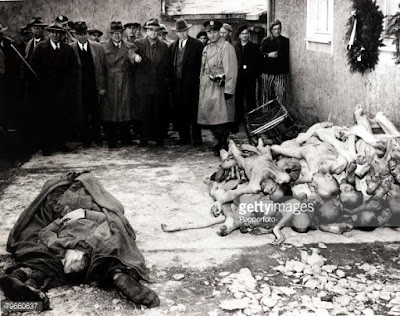Nuremberg
In November 1945, the first international war crimes trial began in the German city of Nuremberg. For much of the western public who intently followed the proceedings between 21 November 1945 and 1 October 1946, the 22 defendants who stood in the dock were seen as the living embodiments of a repressive and warmongering system which had propelled the world into six years of war, causing the deaths of fifty million people. The location was chosen for both practical and symbolic reasons. Firstly, the Palace of Justice in Nuremberg and its adjoining prison had emerged intact from the Allied bombing of Germany. Secondly, Nuremberg was considered the spiritual birthplace of the Nazi state, and had hosted the party’s elaborate annual rallies.
The defendants had widely varying levels of seniority within the Nazi party and responsibility for war crimes. While the involvement and complicity of some, such as Hitler’s second-in-command, Hermann Göring, was clear, some defendants were deputies or juniors of senior men like SS leader Heinrich Himmler, or head of propaganda Joseph Goebbels. These men substituted their superiors, who had committed suicide in order to escape being captured and brought to justice.
The defendants were charged with an array of crimes: crimes against peace, which included conspiring to, planning and waging a war of aggression, war crimes, and crimes against humanity. This last was newly-defined to include "Murder, extermination, enslavement, deportation, and other inhumane acts committed against any civilian population, before or during the war.”
The defendants’ attitudes to the trial also varied widely. Robert Ley, former head of the ‘Strength through Joy’ movement, hanged himself in his prison cell just weeks before the trial began. While Hermann Göring was prepared to defend the honour of the deceased Fuhrer and the Nazi party, irritating the American prosecutor with his sharp comebacks and defence of German patriotism, official Nazi architect Albert Speer meekly accepted the defendants’ collective responsibility from the beginning. Hitler's deputy and head of the party chancellery Rudolf Hess, faced with the enormity of the situation, appeared to suffer (or feign) almost total memory loss.
When the final verdicts were announced, only three were acquitted while the rest were found guilty and sentenced either to death or significant terms in prison. Göring was found guilty of all the charges brought against him and condemned to death. The night before his supposed execution, he managed to commit suicide in his cell. Albert Speer succeeded to some extent in his attempt to distance himself from Hitler, portraying himself as a harmless technocrat, willing to supply the prosecution with information and statistics, while also admitting to his share of collective responsibility for Nazi crimes. Speer escaped the death sentence, receiving instead a twenty year prison sentence for his role in the exploitation of forced foreign slave labour. Rudolf Hess, who spent the entire trial in a state of paranoid delirium, was sentenced to life imprisonment. He killed himself in prison in Berlin in 1987.
The trials at Nuremberg were not the first or the last hearings of Nazi war criminals. Nearly 200 other prominent Nazis were tried at Nuremberg before US Military Tribunals from 1946 until 1949. Other prominent Nazis stood trial elsewhere in Europe, particularly in Austria and Poland; Rudolf Hoss, the camp commandant of Auschwitz, was tried in Warsaw and hanged in Auschwitz in 1947. Indeed, the quest for redemption continued for decades, as evidenced by the trial of Adolf Eichmann in Israel in 1961.
Imperial Japan
When Emperor Hirohito ascended to the throne in 1926, Japan was enveloped in a struggle between liberals and leftists on one side, and ultraconservatives on the other. In 1925, universal male suffrage was introduced, increasing the electorate from 3.3 to 12.5 million. Yet as the left pushed for further democratic reforms, right-wing politicians pushed for legislation to ban organisations that threatened the state by advocating wealth distribution or political change. This resulted in 1925’s ‘Peace Preservation Law’, which massively curtailed political freedom.
As the left disintegrated, ultra-nationalism began to loom large. Japanese nationalism was born at the end of the nineteenth century. During the Meiji period, industrialisation, centralisation, mass education and military conscription produced a shift in popular allegiances. Feudal loyalties were replaced by loyalty to the state, personified by the Emperor.
Although early ultra-nationalists called for a tempering of Japan’s ‘westernisation’, through limits on industrialisation, their focus changed after the First World War. Western politicians criticised Japan’s imperial ambitions and limited Japanese military expansion (in 1922’s Five Power Naval Limitation Agreement). The 1924 Japanese Exclusion Act prohibited Japanese immigration into the US. Ultra-nationalists saw these actions as provocative; they moved towards xenophobic, emperor-centred and Asia-centric positions, portraying the ‘ABCD Powers’ (America-British-Chinese-Dutch) as threatening the Japanese Empire.
Between 1928 and 1932, Japan faced domestic crisis. Economic collapse associated with the Great Depression provoked spiralling prices, unemployment, falling exports and social unrest. In November 1930, the Prime Minister Hamaguchi Osachi was shot by an ultra-nationalist. In summer 1931, as control slipped away from the civilian government, the army acted independently to invade Manchuria. Troops quickly conquered the entire border region, establishing the puppet state of Manchukuo. Though the League of Nations condemned the action, it was powerless to intervene, and Japan promptly withdrew its membership. International isolation fed ultra-nationalism. Mayors, teachers and Shinto priests were recruited by ultra-nationalist movements to indoctrinate citizens.
In May 1932, an attempt by army officers to assassinate Hamaguchi’s successor stopped short of becoming a full-blown coup, but ended rule by political parties. Between 1932 and 1936, admirals ruled Japan. Within government, the idea of the ‘Greater East Asian Co-Prosperity Sphere’ emerged. This plan called for Asian unification against western imperialism under Japanese leadership, leading to Asian self-sufficiency and prosperity. In reality, it meant an agenda of Japanese imperial domination in the Far East.
In July 1937, Japanese soldiers at the Marco Polo Bridge on the Manchuria border used explosions heard on the Chinese side as a pretext to invade China. The offensive developed into a full scale war, blessed by Hirohito. Japan enjoyed military superiority over China. The army advanced quickly and occupied Peking. By December, the Japanese had defeated Chinese forces at Shanghai and seized Nanking. There Japanese troops committed the greatest atrocity of an incredibly brutal war: the ‘Rape of Nanking’, in which an estimated 300,000 civilians were slaughtered.
By 1939, the war was in stalemate; Chinese Communist and Nationalist forces continued to resist. Yet Japanese imperial ambitions were undimmed. In 1940, Japan signed the Tripartite Pact, creating the Rome-Tokyo-Berlin Axis, building on the alliance created in 1936 by the Anti-Comintern Pact. Japan now looked hungrily towards the oil-rich Dutch East Indies to fuel its Co-Prosperity Sphere. In 1941, when Imperial General Headquarters rejected Roosevelt’s ultimatum regarding the removal of troops from China and French Indochina, the US President announced an oil embargo on Japan. For Japan, the move was the perfect pretext for war, unleashed in December 1941 with the Pearl Harbor attack.
Sino-Japanese War
In the 1930s, China was a divided country. In 1927 Chiang Kai-Shek had formed a Nationalist Government – the Kuomintang (the KMT), but his dictatorial regime was opposed by Mao Tse Tung’s Communists (CCP). Civil war between the Communists and Nationalists erupted in 1930 – the period of Mao’s legendary ‘Long March’.
In 1931, Japan, eager for the vast natural resources to be found in China and seeing her obvious weakness, invaded and occupied Manchuria. It was turned into a nominally independent state called Manchukuo, but the Chinese Emperor who ruled it was a puppet of the Japanese. When China appealed to the League of Nations to intervene, the League published the Lytton Report which condemned Japanese aggression. The only real consequence of this was that an outraged Japanese delegation stormed out of the League of Nations, never to return.
In the 1930’s the Chinese suffered continued territorial encroachment from the Japanese, using their Manchurian base. The whole north of the country was gradually taken over. The official strategy of the KMT was to secure control of China by defeating her internal enemies first (Communists and various warlords), and only then turning attention to the defence of the frontier. This meant the Japanese encountered virtually no resistance, apart from some popular uprisings by Chinese peasants which were brutally suppressed.
In 1937 skirmishing between Japanese and Chinese troops on the frontier led to what became known as the Marco Polo Bridge Incident. This fighting sparked a full-blown conflict, the Second Sino-Japanese War. Under the terms of the Sian Agreement, the Chinese Nationalists (KMT) and the CCP now agreed to fight side by side against Japan. The Communists had been encouraged to negotiate with the KMT by Stalin, who saw Japan as an increasing threat on his Far Eastern border, and began supplying arms to China. China also received aid from western democracies, where public opinion was strongly anti-Japanese. Britain, France and the US all sent aid (the latter including the famous ‘Flying Tigers’ fighter-pilot volunteers). Because of historic ties, China also received aid from Nazi Germany for a short period, until Hitler decided to make an alliance with Japan in 1938.
Although the Japanese quickly captured all key Chinese ports and industrial centres, including cities such as the Chinese capital Nanking and Shanghai, CCP and KMT forces continued resisting. In the brutal conflict, both sides used ‘scorched earth’ tactics. Massacres and atrocities were common. The most infamous came after the fall of Nanking in December 1937, when Japanese troops slaughtered an estimated 300,000 civilians and raped 80,000 women. Many thousands of Chinese were killed in the indiscriminate bombing of cities by the Japanese air force. There were also savage reprisals carried out against Chinese peasants, in retaliation for attacks by partisans who waged a guerrilla war against the invader, ambushing supply columns and attacking isolated units. Warfare of this nature led, by the war’s end, to an estimated 10 to 20 million Chinese civilians deaths.
By 1940, the war descended into stalemate. The Japanese seemed unable to force victory, nor the Chinese to evict the Japanese from the territory they had conquered. But western intervention in the form of economic sanctions (most importantly oil) against Japan would transform the nature of the war. It was in response to these sanctions that Japan decided to attack America at Pearl Harbor, and so initiate World War II in the Far East.


